
Jhalana Forest, at the foothills of Aravalli range, is in the City’s heart of Jaipur. This maiden ‘Leopard Reserve Park’ comprising 23 Square Kms has in it all; hills, valleys, plateaus and sand dunes. Remarkably, it is the home to over 30-35 elegant Leopards.
Visitors queue towards this park primarily to watch the fascinating spotted wild cats – living in their natural habitat. Along with Leopards, you may also come across other species of animals like Peacocks, Hyena, wild Hare, Neelgai, along with many species of birds.
Jhalana
On reaching Jaipur, immediately after an exciting trip to Ranthambore (as described in Part 1, Part 2, Part 3, and Part 4) you check-in at hotel Lalit, located right within the city. So as planned, next morning, Sumit Juneja, a reputed organizer of safaris, sends you a safari vehicle to bring you to the park.
So, you along with driver Shitkal soon enter the jungle through Route 2, situated close to the Park’s main entrance. ( Incidentally, Jhalana Forest is demarcated into 5 Routes or 5 Zones).
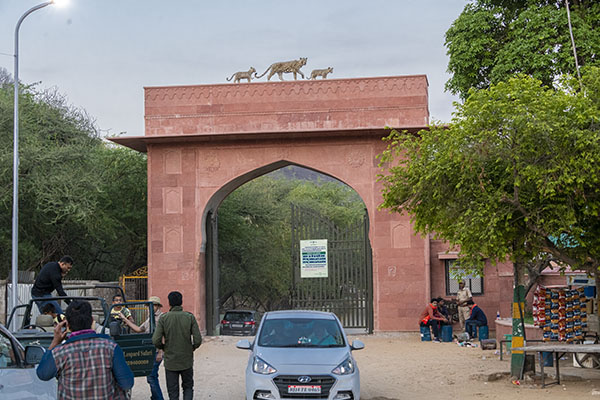
Leopardess Flora
Immediately after entering Route 2, Shitkal gets a serendipitous call. The caller informs Shitkal of a Leopard Sighting happening in Route 1.
Needless to say, Shitkal swiftly turns the wheels of the gypsy and rushes towards the indicated spot. On reaching there you are spellbound seeing a fully grown Leopardess ‘Flora’ feasting on a Peacock. Flora presumably has hunted and killed this poor peacock just moments ago.
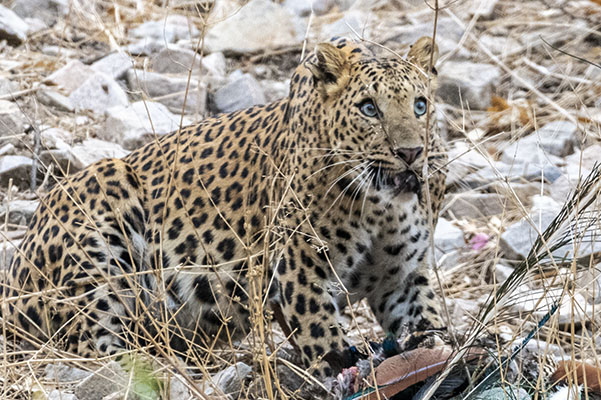
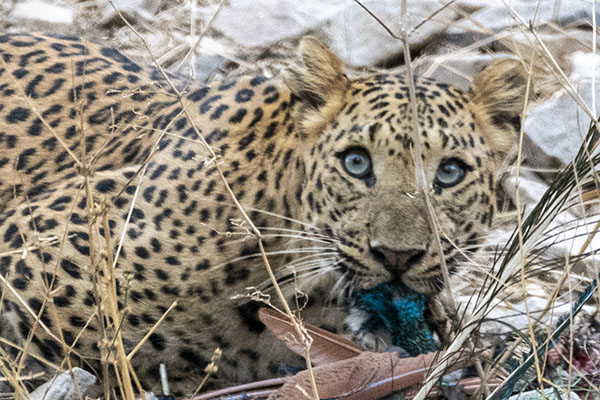

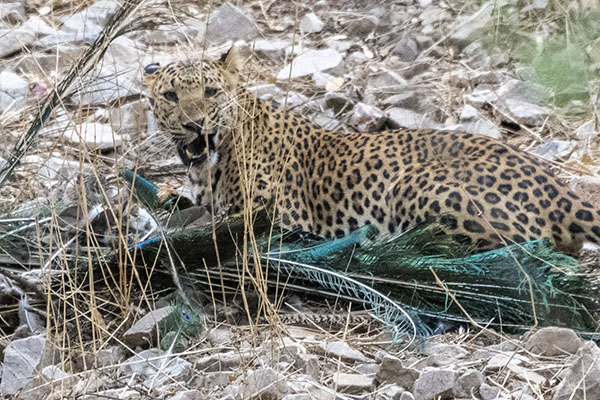
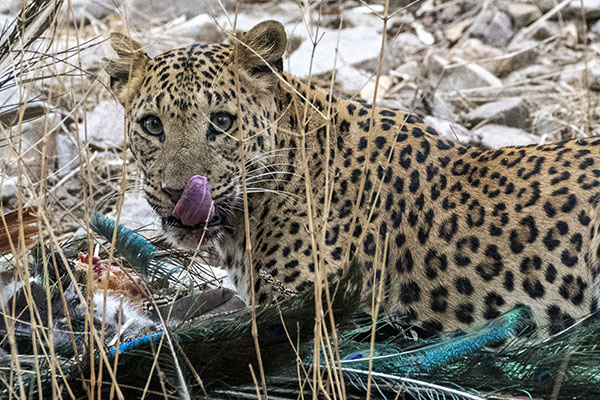
Even as you watch, Flora assiduously and mercilessly rips apart her prey’s flesh with her sharp canines. You remain captivated as the axiom ‘Survival of the fittest’ is proven once more before you.
In the meanwhile, couple of peahens are helplessly watching their companion been slaughtered not too far from the site. You are surprised at their guts for soon one among them could become Flora’s next meal.


Once satiated, Flora leaves walking nonchalantly behind the bushes to disappear. The feathers of the unfortunate peacock however lie scattered around.

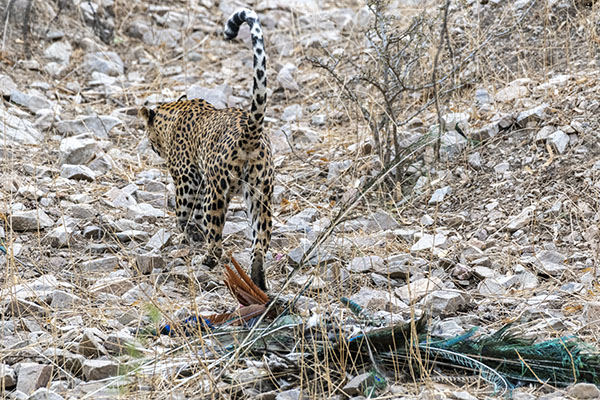
Shikar-Hodi
Your quest to sight more leopards has now got further animated. As a result, you then move to a different zone to try luck.
Over there, in one of the zone you drive uphill and reach an 1835 hunting lodge known as ‘Shikar-Hodi’. Interestingly, this place was built by one erstwhile Maharaja of Jaipur for the purpose of pleasure hunting.

Gate to Shikarhaudi

Shikar Hodi 1
Once you climb atop ‘Shikar-Hodi’, you get an amazing 360 degree panoramic view of the area. A diverse topography with expanse of deciduous (leafless) forest and hills on one side and city of Jaipur on the other.
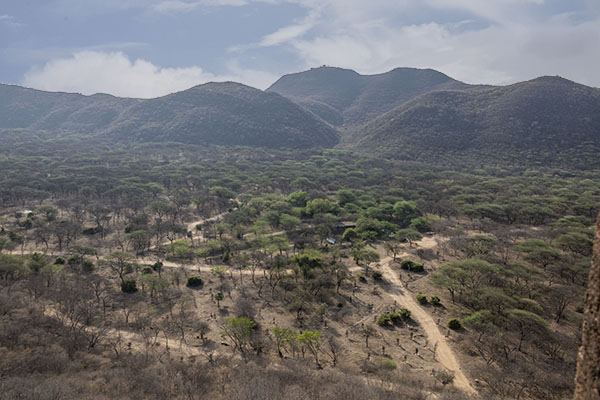

Afterwards, as you drive down, a beautiful Peacock is seen dancing in the middle of the road, right in front of you. This male, is ostensibly in the process to impress couple of peahens around.

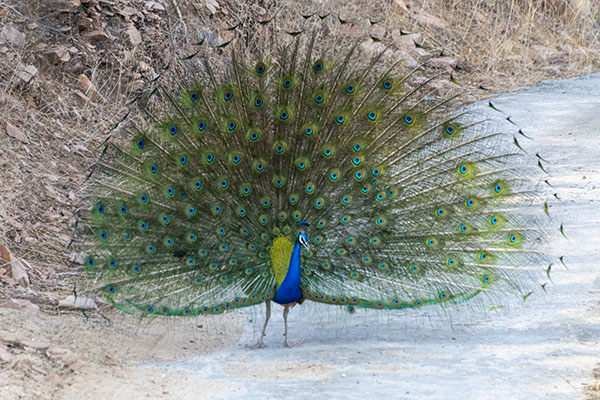
As you drive around, you come across Yellow Legged Pigeon, Common Hoope, Spotted Owlet, White-throated King Fisher, Crested Bunting, pair of Brahiminy Starling and Black Rumped Flamback, one after the other.
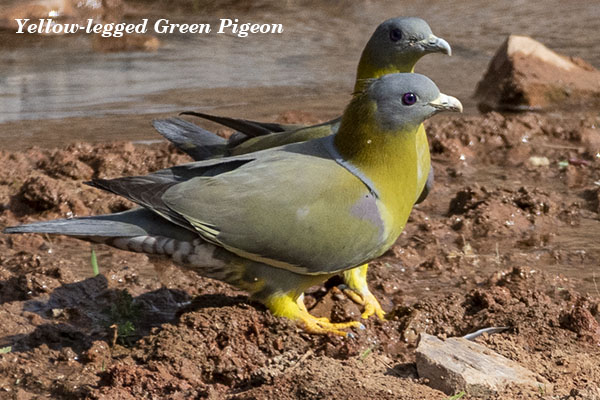
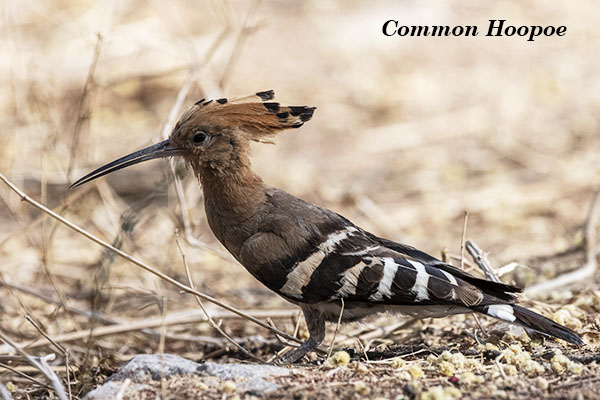
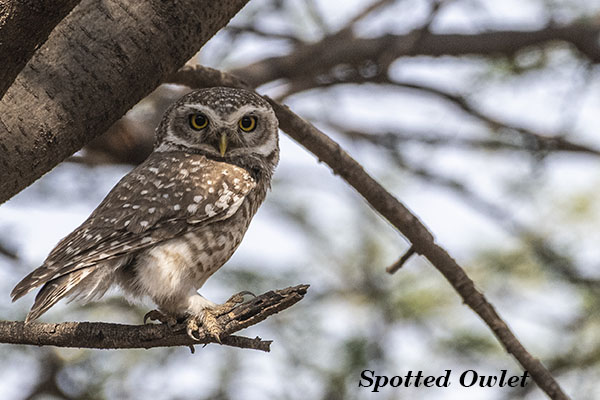

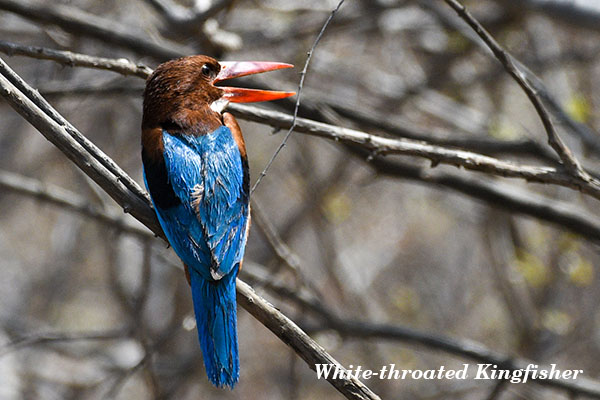
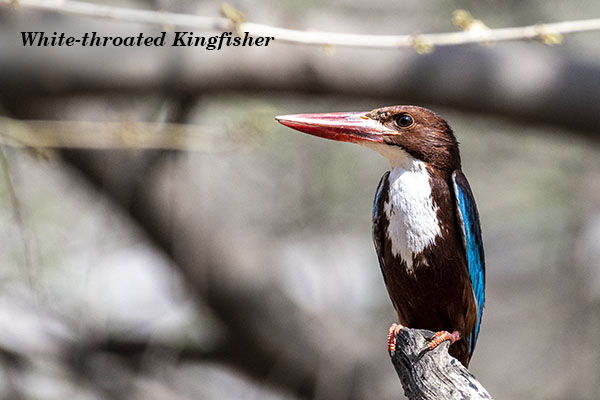

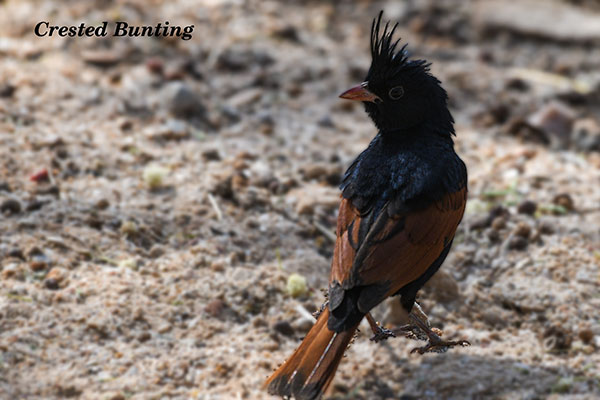
The same evening as the Safari continued, at a place called Rampratap, a cute Mangoose is seen sipping water. As we stop near this artificial pool, he looks at you and literally flies away with massive strides.

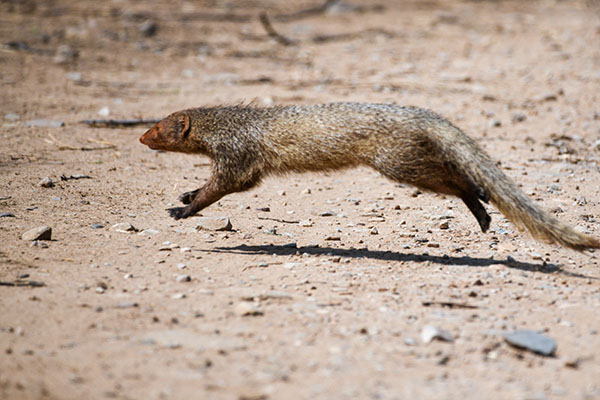
Later, birds with varied attractive plumage like Common Tailor Bird, Green Bee Eater attract your attention.
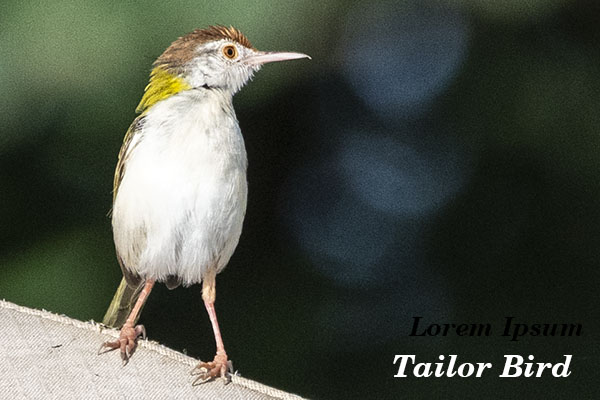
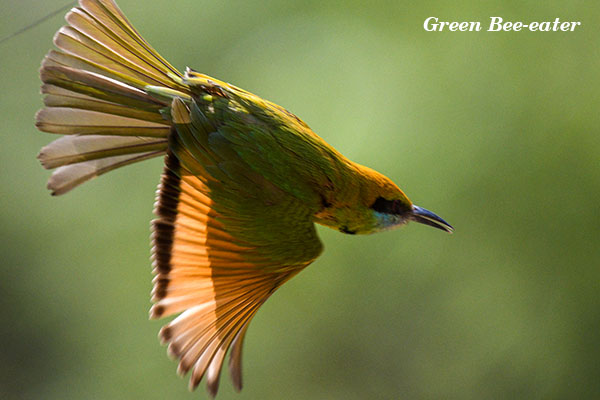
Then comes supposedly a rare raptor bird (reputedly ‘Sardar of Hunter Birds’) – ‘Northern Goshawk’ also known as an Accipiter Gentilis.
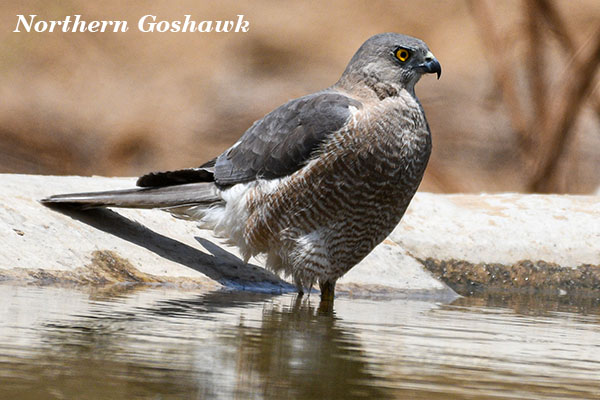
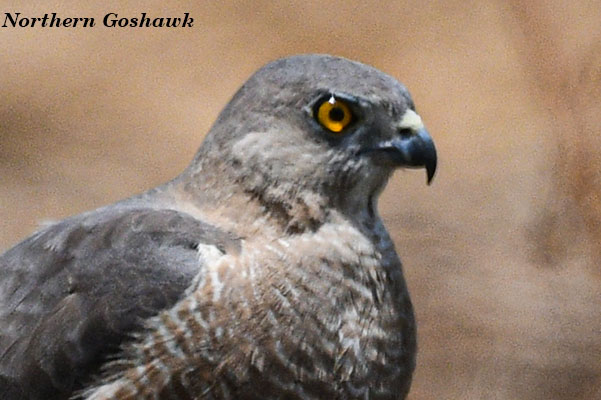
Regretfully, there is no leopard around. It is presumed, leopards are both, shy and stealthy. Hence not so easy to spot.
Plausibly due to this nature of theirs, the park authorities have begun to encourage the use of E-Vehicles. E-vehicles generally make lesser noise than the old-fashioned Gypsies.
Meanwhile, you come across Crested lark. A Greater Coucal is later seen perched on a tree near ‘Nature Farm Dalai’. Then there is this Wild Hare followed by Spotted Owlette, Eurasian Collared-Dove as well as Grey Falcon. Peacocks nevertheless remain omnipresent.
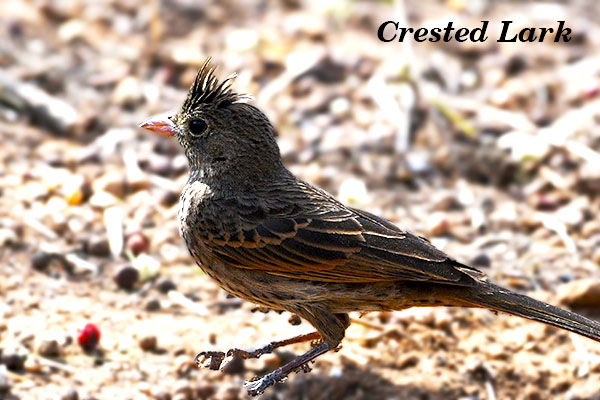
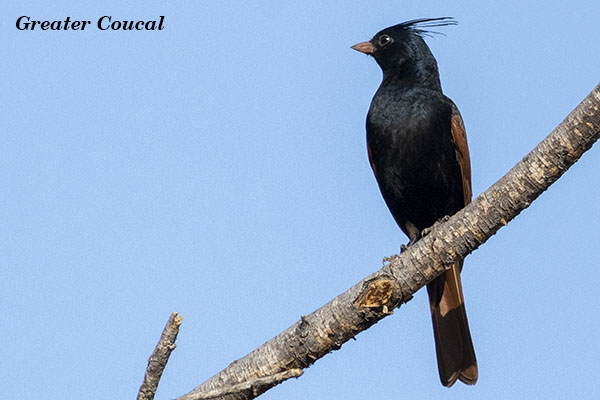
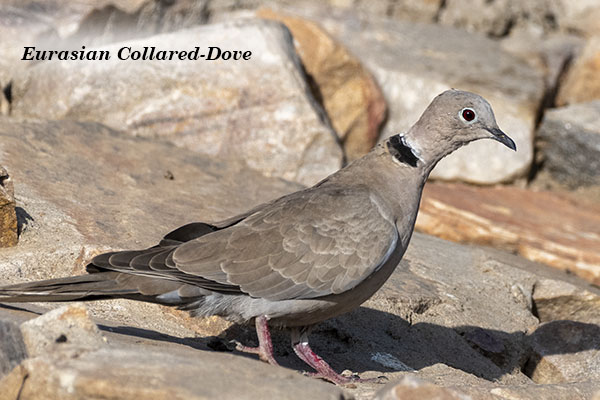

Later on the way to the Devi temple situated at the boundary of the forest, you come across a Night Jar. Then a Neelgai is seen drinking water from a cement crucible nearby and a Mongoose watching you pass by.

Neelgai
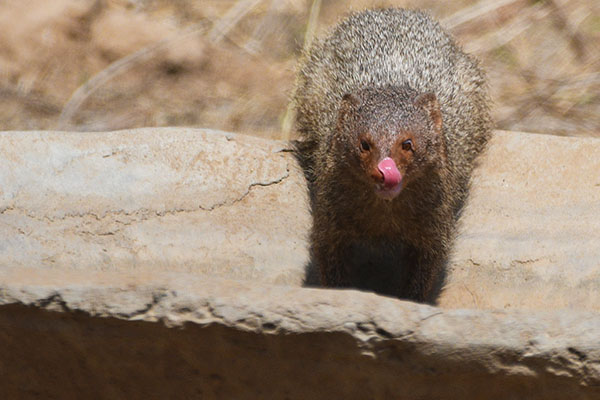
Mangoose
Male Leopard
After paying obeisance at the Devi Temple, on return, you are enthralled seeing a Male Leopard sitting quietly on the slope of the hill adjacent to the road.
As you begin to take pictures of this spotted cat, the sound of other approaching Gypsies possibly scared him. Introvert by nature, he quickly gets up and moves up the hill before disappearing completely.
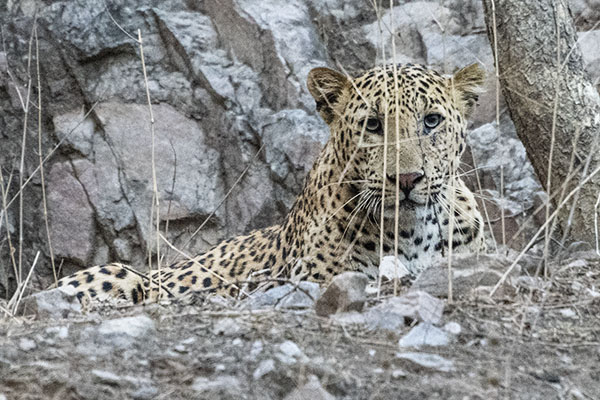
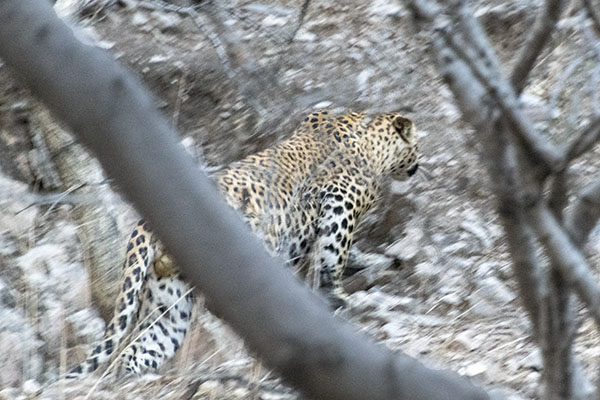
Hotel Lalit, Jaipur
Same night at ‘The Lalit’, a authentic Rajasthani dance event organised by the Hotel is truly enthralling. As the show gets over, you proceed towards the coffee shop for dinner before returning back to your room.


Hawa-Mahal
Next day before you leave the pink city, you decide to visit important landmarks here.
As you drive through the Pink avenues, the first place you come across is the iconic ‘Hawa Mahal’. Also known as ‘Palace of Winds/Breeze’.
This five storied imposing structure has 953 Small windows or ‘Jharokhas’ as they are called. It was constructed in 1799 to facilitate queens of Maharaja Sawai Pratap Singh to observe passing processions sitting behind these Jharokhas.

Next is the ‘Jaigarh Fort’, followed by ‘Amer Fort’. ‘Amer Fort’ purportedly houses the palaces of Seven Queens within it.
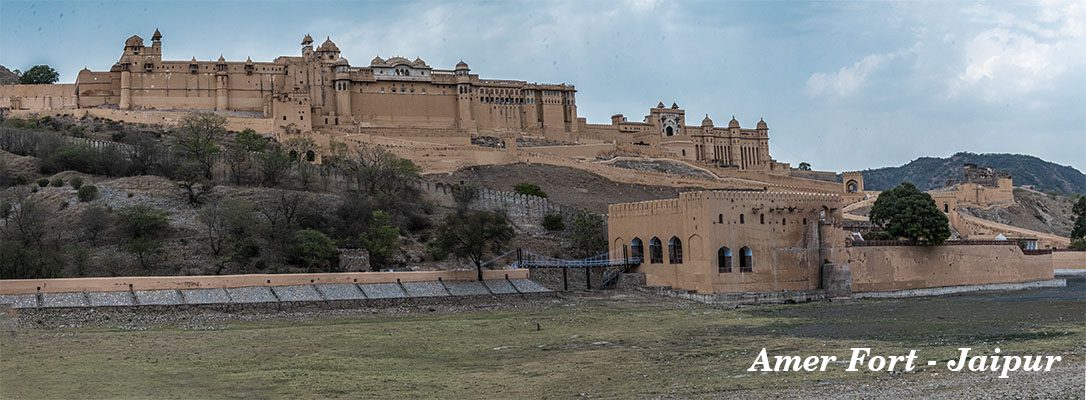
Jal Mahal
Moving ahead, opposite the ‘Sanjay Sharma Research Institute’, right in the middle of the lake is situated ‘Jal Mahal’. Jal mahal incidentally was once the summer palace of the Maharajas of Jaipur. This five storied structure was built by the great warrior king Maharana Pratap Singh. Interestingly only the top floor of this Mahal is visible when the lake is full with water.

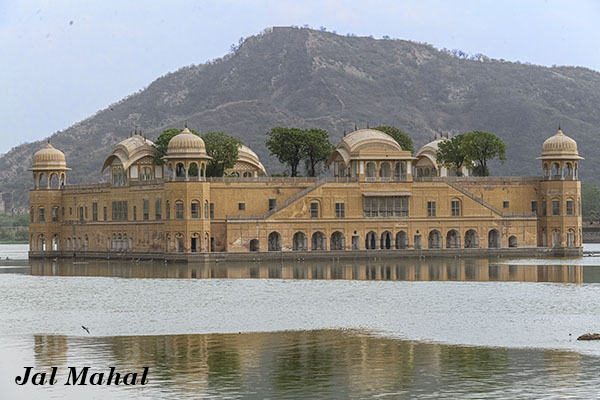
City Palace
Moving further ahead, after crossing ‘Zorawar Gate’, you reach the famous ‘Maharaja Man Singh ll Museum’ or ‘City Palace’.
This huge private property is primarily divided into two parts. One part is the seven storied building called ‘Chandra Mahal’ and the second part is converted into a ‘Public Museum’.
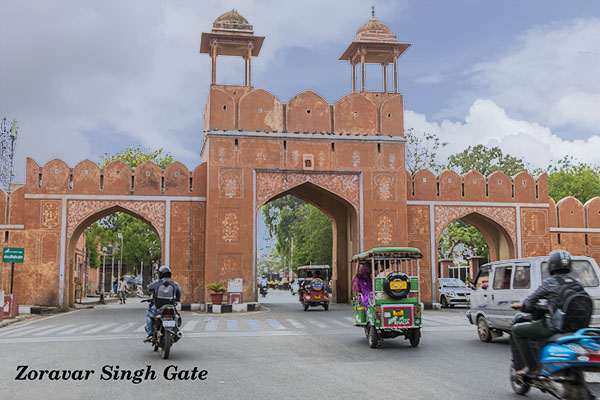
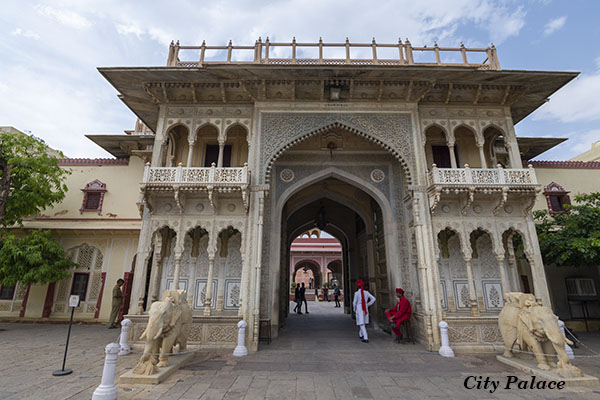
The part that is converted into Museum is further divided into three sections. They are, Mubarak Mahal/Textile Gallery, Arms Museum and the Art Museum. Interestingly, the flag hoisted over this Museum is not Indian Tricolor but a conspicuous five colored Royal Flag.
After you pay Rs 3,000 you get to visit Chandra Mahal and with Rs. 300 only the Museum. You then pay Rs. 300 and choose to see the Museum only. You can also hire a guide by paying a extra 300.
On entering the Museum, the first thing you come across is a huge hall having two impressive 5.2 feet Urns, Gangajalis placed on one of its side. Made with 14,000 melted un-soldered silver coins displayed over it, this Urns (also mentioned in Guinness Book of World records) was used to transport Ganga Water while Maharaja Sawai Madho Singh ll was on his trip to England in the year 1901. (Maharaja drank water only from the holy Ganges)
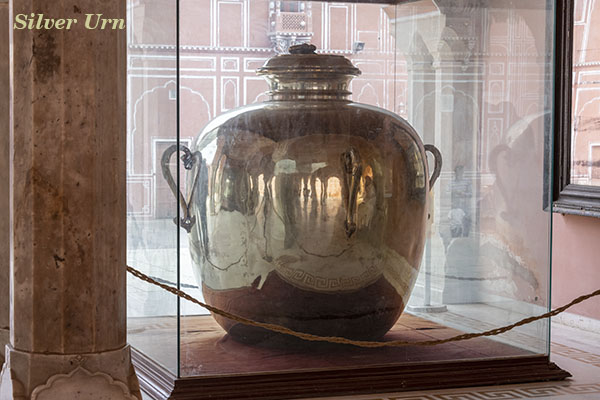
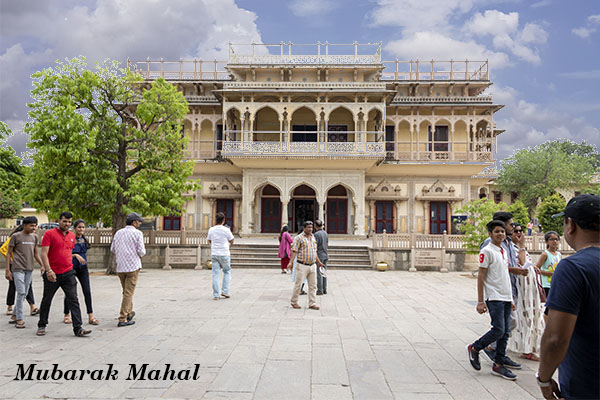
So just across is the Royal Family’s erstwhile Guest House. This is now converted into a Textile Gallery. Here some incredibly large garments those once worn by a huge bodied Maharaja Sawai Madho Singh are on display. Costumes of other Kings too are also showcased.
A Polo Uniform of Raja Maan Singh is one interesting dress that cannot escape your eye.
Later in the Arms Section you see Swords, Guns, Shields, Indian Daggers etc. etc.. used (used ?? did they ever fight any war ??) by the kings during their times. However, taking pictures of this area is prohibited.
Finally, the Durbar Section is followed by the Craft and Painting section. In here you come across some exceptionally talented painters sitting on the floor-mat, displaying their art.
You are astonished watching their hand made paintings. Moreover these artists vouch that the color of the paintings would never fade considering they are created from natural colors.
Albert Hall
Having spent nearly two hours inside City Palace, you now drive towards the Albert Hall. This is another museum that reportedly has royal costumes of the rulers of Jaipur along with Paintings, antique Jewelry and attractive Carpets displayed. Unfortunately, paucity of time inhibits you from venturing inside this place.

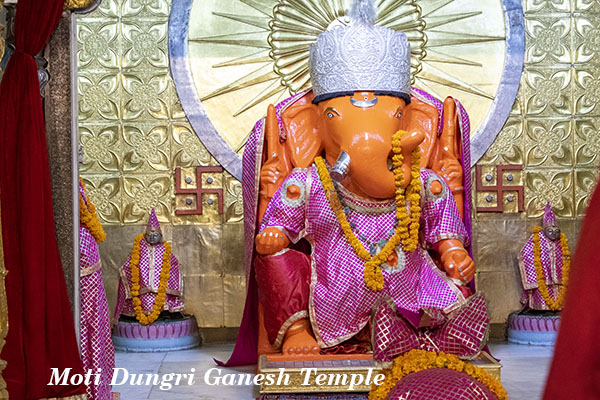
Lastly, after paying your obeisance to the famous Moti Dungri Ganesh Temple and the famous Birla Temple you then proceed towards Jaipur Railway Station. Your train back home @Mumbai is about to depart. Thus ends, a short and arguably, memorable trip @Jaipur.
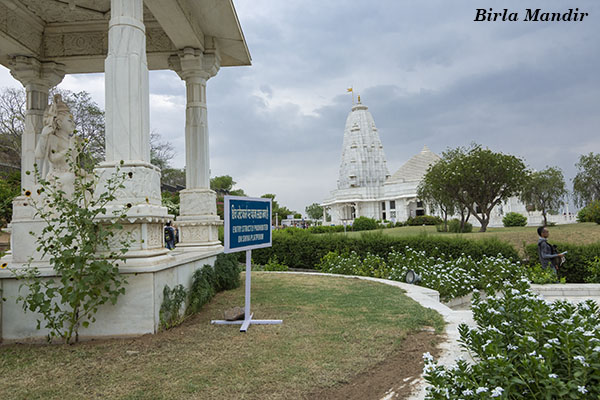



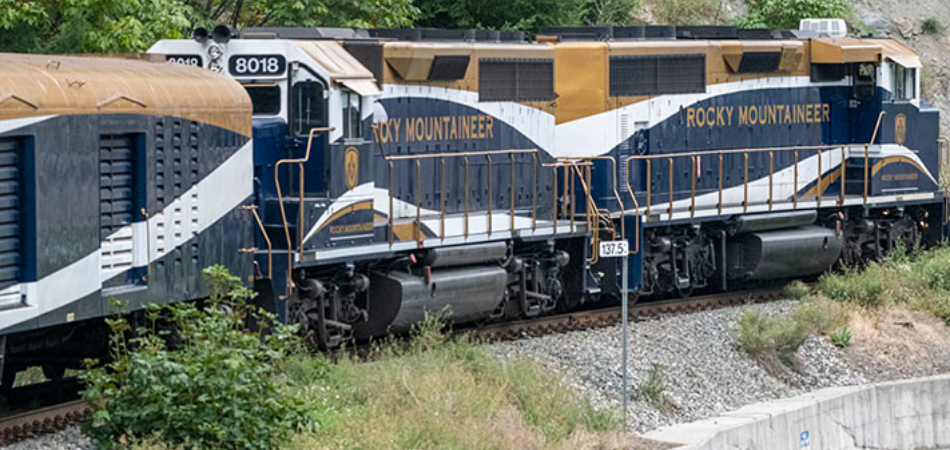
Anonymous
Beautiful
Anonymous
Beautifully captured pictures of animals and unseen birds especially kingfishers and very beautifully described Jaipur
Anonymous
Enjoyed reading your blog. Nice pics as well as informative
Anonymous
5
Anonymous
Awesome photography
Anonymous
4
ANIL DUREJA
Wonderful.
Anonymous
Wow..nice write up n great clicks..enjoyec ur blog always
Subhash Angadi
Dear Bhupender, your simplistic style of narration is superb. I always enjoy your well illustrated travel experience.
Looking forward to many more articles from you.
Best wishes.
Dr. Subhash Angadi.